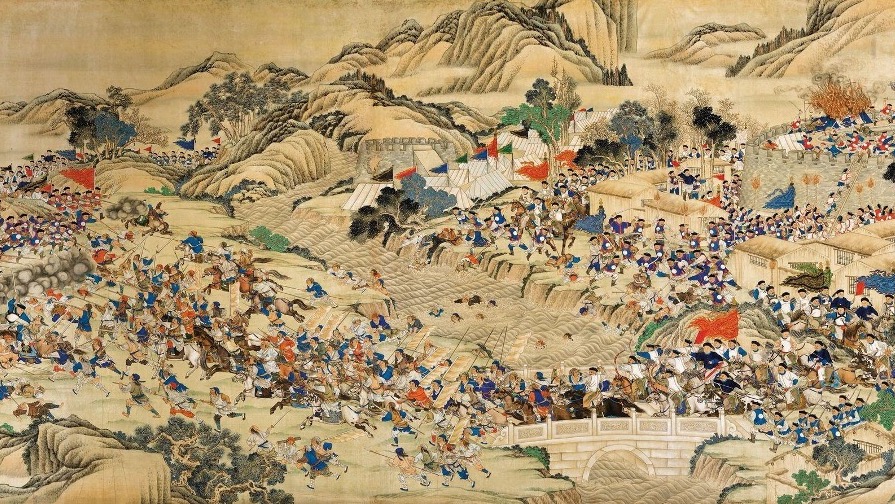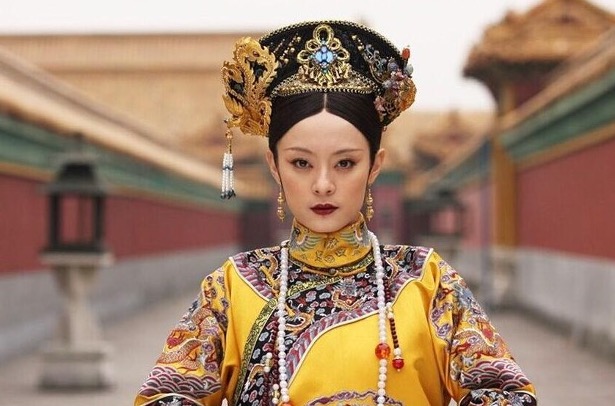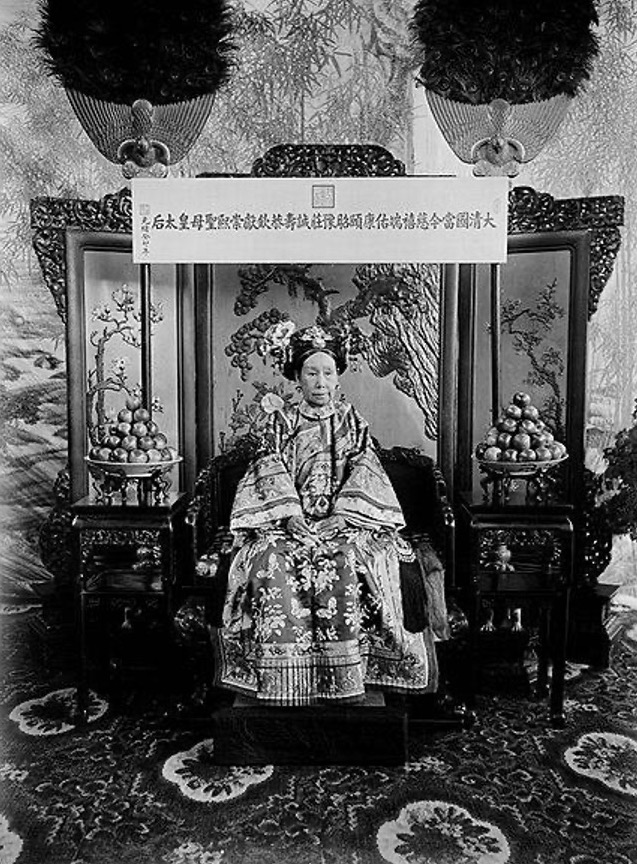The Qing: China’s Last Imperial Dynasty
The Qing dynasty was China’s last dynasty and is a controversial and paradoxical one. It is seen by many as being partially responsible for the so-called ‘Century of Humiliation’ between 1839 and 1945. On the one hand, as a dynasty, it ruled more territory than every other dynasty before it, with lands encompassing Tibet, Taiwan, and Korea (as a protectorate). Furthermore, many practices popularised during the Qing, such as Peking opera, hot pot and Mahjong, are seen as cornerstones of contemporary Chinese culture. The dynasty has appeared in several popular dramas and movies including: The Last Emperor (1987); Empresses in the Palace (2011); Ruyi’s Royal Love in the Palace (2018), and Scarlett Heart (2011).
It is important when discussing the Qing to mention its ethnicity; the Qing were not Han (the majority ethnicity in China) but Manchu. This group originated from Northeast China (often called Manchuria) and they were originally known as Jurchens, nomadic pastoralist groups with more in common with horse nomads of central Asia, such as the Mongolians, Khitans, Xongnu or Xianbei, than the Han people. The Han is an ethnic group which made up most of China’s population and still to this day. Up until the Jin and Qing, the Jurchen were divided among hunter-gatherers, pastoralist semi-nomads, or sedentary agriculturists, and lacked a central authority. The Jurchens became the Manchus in 1635 after being renamed by Hong Taiji, the second Khan of the Later Jin Dynasty (1616-1636), one of two previous Manchus dynasties, with the other being the Great Jin Dynasty (1154-1234).
The Qing’s foundation lay in Nurhaci (temple name: Emperor Taizu of Qing) who united the Jurchen tribes and became the founding Khan of the Later Jin Dynasty who renounced the declining Ming Dynasty (1368-1644), which was suffering from famine and peasant revolts. His son Hong Taiji formally founded the Qing and named himself as emperor rather than Khan as his father had done. The Qing’s peak (the High Qing era) was between 1683 to 1799 during the reigns of the Kangxi, Yongzheng, and Qianlong Emperors. The Kangxi emperor is noted as the longest-reigning emperor in Chinese history (61 years) though some would argue that the Qianlong emperor ruled for longer. He officially retired out of filial piety to his grandfather but still ruled from behind the scenes as emperor emeritus for several years). Later, foreign intervention (the Opium Wars) and internal insurrections (the Taiping Rebellion) caused it to decline.
Military
The Qing ruled over a large and multiethnic empire with a small Manchu ruling class governing the majority of the Han population. The Eight Banners were military and administrative divisions established by Nurhaci, into which all households were placed. They functioned as armies and were an elite noble force; the banners were expanded further to include Mongolian and Han allies. These forces were considered separate from the Green Standard army, being much better equipped and trained. The banner armies were responsible for the invasion of Joseon Korea and its subsequent cutting of ties with the Ming. The peak of the Banner armies was during The Ten Great Campaigns. These consisted of several campaigns against the Dzungar Khanate of modern-day Xinjiang province which culminated in a genocide that is estimated to have resulted in the deaths of 420,000-480,000 (1755-1759). Further campaigns included the pacification of the Jinchuan Hill People of Sichuan (1747–1749, 1771–1776), failed invasions of Burma (1765–1769), and the Conquest of Taiwan (1786–1788), which was controlled by Ming loyalists.

By the end of the Qianlong emperor’s reign, the quality of the banner-man had declined significantly with the hereditary nature allowing them to become idle due to privilege. John Ross, a Scots missionary noted in 1891 that:
“Their claim to be military men is based on their descent rather than on their skill in arms; and their pay is given them because of their fathers’ prowess, and not at all from any hopes of their efficiency as soldiers. Their soldierly qualities are included in the accomplishments of idleness, riding, and the use of the bow and arrow, at which they practice on a few rare occasions each year.”
This is shown in their failure to suppress the Taiping Rebellion and their ineffectiveness against the technologically advanced military of the Western powers and Japan in the Opium Wars (1839-42, 1856-1860), the First Sino-Japanese War (1894-1895), and the Boxer Rebellion (1899-1901).
Fashion
It is impossible to talk about the Qing without discussing their unique fashion, which was unlike that of its predecessor dynasties. The most notable example of this is the male hairstyle, known as a queue or cue; it consisted of a long-braided scalp with a shaved front. This hairstyle has roots among nomadic horse tribes going as far as the Xianbei (a group that Hua Mulan, of Disney fame, was a part of). The queue is distinct from the fashion of the Ming who favoured long hair in men. The Qing imposed the queue on all other ethnicities and groups, including Taiwanese aborigines and Korean settlers, something which caused much distress among the Han, who were philosophically inclined to wear their hair long.

The Qing also brought a new style of clothing into fashion, known as Qizhuang or Manfu. These robes contrasted with the flowing Hanfu of the Ming by adding more emphasis on practicality for horse riding. Female fashion during the Qing consisted of a distinctive headpiece called a Liangbatou. This headdress was worn as a status symbol with it being more elaborate the higher up in society you went, and was popularised by the show Empresses in the Palace. After the 1911 revolution, many shaved their heads and began to dress in Western-style clothing.
The West
The Qing is known as a dynasty that interacted with Western powers more than any before it. This is remembered by many Chinese with some bitterness. Events such as the Opium Wars (1839-1842, 1856-1860), in which the Chinese attempted to enforce its ban on opium by burning stock of it, prompted the British to use ‘gunboat diplomacy’. The second war was fought against the British/French alliance and resulted in not only the legalisation of opium, but also the Treaties of Nanjing/Tianjin (both unequal treaties), the occupation of the Forbidden City, and the sacking of the Old Summer Palace (Yuanmingyuan). Further interactions came during the Boxer Rebellion led by The Righteous and Harmonious Fists in Northern China. The movement was distinctly anti-foreign, anti-imperialist, and anti-Christian and thus attracted the attention of the Western powers who later formed an eight-nation alliance to deal with it. The ‘rebellion’ was supported by Empress Dowager Cixi and the imperial court, who issued a decree declaring war on the foreign powers. Therefore, it was not a true rebellion, as it was not a rebellion against a legitimate Chinese government, but a movement which was eventually government-backed against foreign influence. The foreign powers once again captured and looted Beijing, after Cixi and the imperial court fled to Xi’an. The Qing were expected to pay reparation of 450 million taels of fine silver, equivalent to £67 million in modern currency.
The Taiping Rebellion
The Taiping Rebellion (also known as the Taiping Civil War or Revolution) was an event started in 1850 by Hong Xiuquan, who took inspiration from the Bible and proclaimed himself the younger brother of Jesus Christ. However, the war had its roots in Han discontent with the Manchu governance after a series of unequal treaties with foreign powers. Hong Xiuquan had failed the notoriously difficult and oversubscribed Imperial Civil Service examination three times (only 100 people passed yearly), leading to a nervous breakdown in which his visions and reading of a missionary’s pamphlet led to his proclamation of divinity. His take on Christianity incorporated elements of Buddhism and Confucianism; he preached anti-Manchu rhetoric, naming them as demons. He called for a heavenly kingdom with himself as its king (a theocratic monarchy). His armies initially beat both the Manchu banner armies and the Han Green Standard armies leading to an ethnic extermination (or cleansing) of Manchu ‘demons’ in areas such as Hunan province. The rebellion was a “total war” wherein all Han/Cantonese people, regardless of gender and including women, led by several female generals, such as Hong Xuanjiao, Su Sanniang and Qiu Ersao, a rarity in the nineteenth century. The Taiping army tried and failed to capture Beijing and Nanjing, both significant cities in Chinese history, and were pushed back by Qing armies. A turning point came after the rebellion, when it tried to capture Shanghai, causing British, American, and French armies to get involved, thus leading to the rebellion being suppressed by generals such as Li Hongzhang. It took 14 years and cost the lives of 20-30 million, who had made up approximately 10 percent of the Qing empire’s population.
Empress Dowager Cixi
It is impossible to talk about the Qing without mentioning Empress Dowager Cixi (1835-1908). She is one of the most controversial figures in Chinese history. Born as Xingzhen of the Yehe Nara clan, her father was of the Bordered Blue Banner. She was a concubine to the Xianfeng Emperor; during this era, she went by the name of Concubine Yi. She ascended to the rank of Empress Dowager when her son became the Tongzhi Emperor. During this time, she ruled as the true power behind the throne while her son and later nephew, the Guangxu Emperor, were puppets. Cixi oversaw the reforms in the nineteenth century, the Tongzhi Restoration and self-strengthening movements. These reforms were because of the rebellions and unequal treaties causing the Qing to attempt to strengthen China.
Both movements strived to modernise the Qing’s military and navy while also building trade, sending students to Japan to learn from them. Moreover, maths and science were added to imperial exams, moving away from ancient history, philosophy, and poetry, which had previously made up the exams. Many see the self-strengthening movement and Tongzhi Restoration as being too conservative and doing little in the way of reform, merely delaying the dynasty’s decline, if not actively exasperating it. Cixi later (alongside General Yuan Shikai) was part of a coup against her nephew, the Guangxu Emperor, when he attempted to pass the Hundred Days Reforms, a radical top-down modernisation movement like the Meiji Restoration which would have overhauled the corrupt and outdated Qing military and bureaucracy. Ultimately, Cixi and her conservative supporters are typically viewed as a reason for the Qing’s decline.
Decline and End
As the past few sections have shown, the Qing was in a slow decline from 1830 onwards. With its reputation abroad and internally in ruins, it was known for being a corrupt behemoth. The combination of the Opium Wars, the First Sino-Japanese War, and the Boxer Rebellion, along with a staunch refusal, or possible inability, to reform caused the glory days of the high Qing period to be long gone. The last emperor was Puyi, crowned in 1908 as an infant who cried for the entire time of his coronation. The empire fell in 1911 during the Xinhai Revolution and made way for the Republic of China. Despite a brief stint as puppet ruler of the wartime Japanese state of Manchukuo, in the end, Puyi lived his final years as an ordinary person and died as such in 1967. This article only provides a brief overview of the Qing. In truth, several sections deserve their own articles to examine them properly.
Written by Leon Corneille-Cowell
Bibliography
Brook, T. (2023). The Price of Collapse. Princeton University Press.
Canton, J.A. (2020). This Religious Revolt Nearly Toppled China’s Last Imperial Dynasty. [online] National Geographic. Available at: https://www.nationalgeographic.co.uk/history-and-civilisation/2020/12/this-religious-revolt-nearly-toppled-chinas-last-imperial-dynasty.
Chang, J. (2013). Empress Dowager Cixi: The Concubine Who Launched Modern China. New York: Knopf.
China Daily (2014). Still Photos from the Legend of Zhen Huan – Chinadaily.com.cn. [online] http://www.chinadaily.com.cn. Available at: https://www.chinadaily.com.cn/culture/2014-07/30/content_18215963.htm [Accessed 5 Feb. 2024].
Godley, M. (1994). The End of the Queue: Hair as Symbol in Chinese History. East Asian History, 8.
Harl, K.W. (2023). Empires of the Steppes. Bloomsbury Publishing.
Harrison-Hall, J. and Lovell, J. (2023). Creators of Modern China. London: Thames & Hudson.
Hucker, C.O. (1975). China’s Imperial past: An Introduction to Chinese History and Culture. Stanford, Calif.: Stanford University Press.
Johnson, R.F. (1934). Twilight in the Imperial City. Oxford: Oxford University Press.
Lieven, D. (2022). In the Shadow of the Gods: The Emperor in World History. New York: Allen Lane.
Lovell, J. (2011). The Opium War. London: Picador.

Pingback: The Ming Dynasty, Porcelain, Builders and Travellers | The York Historian